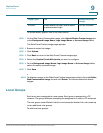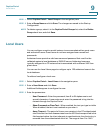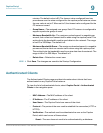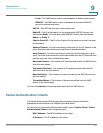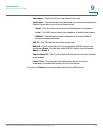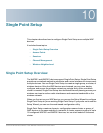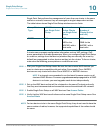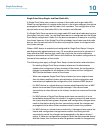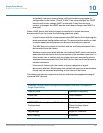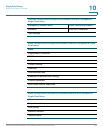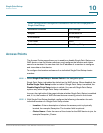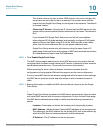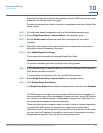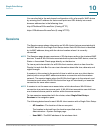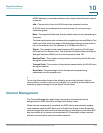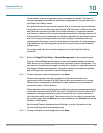
Single Point Setup
Single Point Setup Overview
Cisco Small Business WAP551 and WAP561 Wireless-N Access Point 155
10
secondarily, the most recent change, will be selected to propagate its
configuration to the cluster. (That is, if WAP1 has more changes, but WAP2
has the most recent change, WAP1 is selected. If they have an equal
number of changes, but WAP2 has the most recent change, then WAP2 is
selected.)
When a WAP device that was previously a member of a cluster becomes
disconnected from the cluster, the following guidelines apply:
• Loss of contact with the cluster prevents the WAP device from receiving the
latest operational configuration settings. The disconnection results in a halt
to proper seamless wireless service across the production network.
• The WAP device continues to function with the wireless parameters that it
last received from the cluster.
• Wireless clients associated with the non-clustered WAP device continue to
associate with the device with no interruption of the wireless connection. In
other words, loss of contact with the cluster does not necessarily prevent
wireless clients associated with that WAP device from continued access to
network resources.
• If the loss of contact with the cluster is due to a physical or logical
disconnect with the LAN infrastructure, network services out to the wireless
clients may be impacted depending on the nature of the failure.
The tables summarize configurations that are shared and propagated among all
clustered WAP devices.
Common Configuration Settings and Parameters that are Propagated in
Single Point Setup
Captive Portal Password Complexity
Client QoS User Accounts
Email Alert QoS
HTTP/HTTPs Service (Except SSL Certificate
Configuration)
Radio Settings Including
TSpec Settings (Some
exceptions)
Log Settings Rogue AP Detection
MAC Filtering Scheduler



